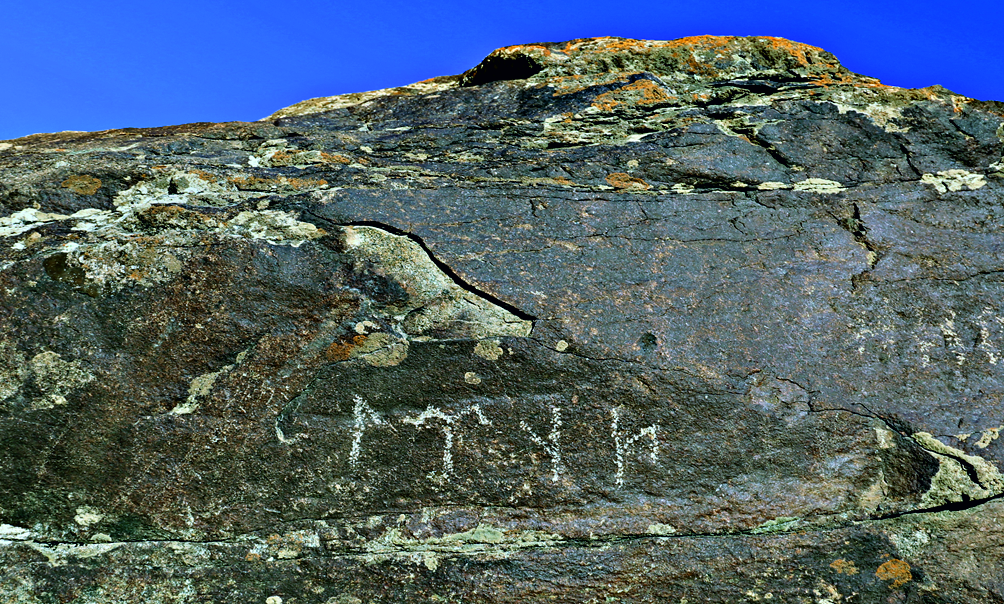Dialogue of Cultures on the Example of the Ancient Turkic Runic of Kyrgyzstan
DOI:
https://doi.org/10.24852/2587-6112.2024.3.429.435Keywords:
archaeology, ancient Turkic runic monuments of Kyrgyzstan, dialogue of culturesAbstract
The ancient Turkic runic writing was the result of cross-cultural influence and enrichment between the Turkic and Sogdian cultures. Evidence can be found in the locations, where ancient Turkic runic monuments in Kyrgyzstan have been discovered and preserved. These written monuments, found on various sites by both nomadic and sedentary peoples, testify to their diverse interrelationships. As an example, we have mentioned two recently discovered monuments. The first one is the Karakol inscription, which was found in 2012 near the city of Karakol. It stands out from other monuments in terms of its writing style and content, suggesting a religious nature and linking it to Nestorian missionaries. It also shares similarities with the rock inscription Ak-Yus (E-38) and fits well within the historical context. Another monument, discovered by the authors in 2018 in the village of Sargata of the Toktogul district, indicates that the runic inscription was also used by the settled population of this region. The inscription was made on the rim of a hum and signifies the method of producing hum. This is similar to the trademarks sometimes left by potters on their ceramic products. Thus, the ancient Turkic runic monuments in Kyrgyzstan provide evidence of interaction and influence between different cultures. Studying the places of discovery and preservation of these monuments helps to better understand the historical relations and regional development.
References
Abdiev, T. K. 2015. In Epigrafika Vostoka (Oriental Eipgraphy) 31, 3–10 (in Russian).
Abdiev, T. K., Tabaldiev, K. Sh. 2020. MONGOLICA 2, 8–14(in Russian).
Babayarov, G. 2013. In Dosymbaeva, A., Zholdasbekov, M. (eds.). Zapadnyy Tyurkskiy kaganat (The Western Turkic Khaganate). Astana: “Service Press” Publ., 567–578 (in Russian).
Batmanov I. A. 1962. In Batmanov, I. A. (ed.) Novye epigraficheskie nahodki v Kirgizii (New epigraphic finds in Kirgizia). Frunze: Akademiya Nauk Kirgizskoj SSR Publ., 15–21.
Butanaev, V. Ya. 2003. Burkhanizm tyurkov Sayano-Altaya (Burkhanism of the Sayano-Altai Turks). Abakan: N.F. Katanov Khakass State University (in Russian).
Zhumagulov, Ch. 1963. Epigrafika Kirgizii (Epigraphy of Kyrgyzstan) 1. Frunze: AN Kirg. SSR (in Russian).
Zadneprovsky, Yu. A. 1967. In Sovetskaia Arkheologiia (Soviet Archaeology) 1, 270–274 (in Russian).
Klyashtorny, S. G. 1959. In Problemy vostokovedeniia (The Issues of Oriental Studies) (5), 162–169 (in Russian).
Klyashtorny, S. G. 2003. Istoriya Tsentral'noy Azii i pamyatniki runicheskogo pis'ma (The history of Central Asia and monuments of Runic writing). Saint Petersburg: Saint Petersburg State University (in Russian).
Etimologicheskiy slovar tyurkskih yazıkov: Obshetyurkskie i mectyurkskie osnovı na bukvı 'K', 'Қ' (Etymological dictionary of Turkic languages: Common Turkic and inter-Turkic bases on the letters 'k', 'K'). The authors of the dictionary of articles L. S. Levitskaya, A. V. Dybo, V. İ. Rassadin. Moscow: «Yazyki russkoj kultury».
Alimov, R. 2014. Tanrı Dağı Yazıtları. Eski Türk Runik Yazıtları Üzerine Bir İnceleme. Konya: Kömen Yayınları (in Turkish).
Harmatta J. 1999. Avarların Dili Sorununa Dair. Doğu Avrupa’da Türk Oyma Yazılı Kitabeler. Çev. H. Akın. Ankara: Atatürk Kültür Merkezi Yayınları (in Turkish).
Konkobaev K., Useev N. 2011. Son Keşifler Işığında Kırgızistanda Eski Türk Yazıtları Araştırmalarının Perspektifleri ve Köktürk Harfli Bir İnanç Formülü. Ötükenden İstambula sempozyumu. Bildiriler. İstanbul: İstanbul Büyükşehir Belediyesis (in Turkish).

Downloads
Published
How to Cite
Issue
Section
License
Copyright (c) 2024 T.K. Abdiev, K.Sh. Tabaldyev

This work is licensed under a Creative Commons Attribution-NonCommercial 4.0 International License.







